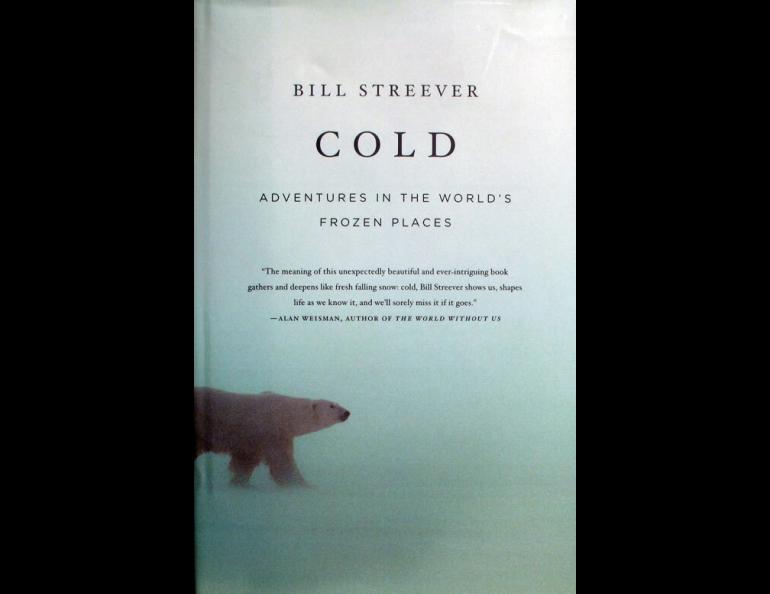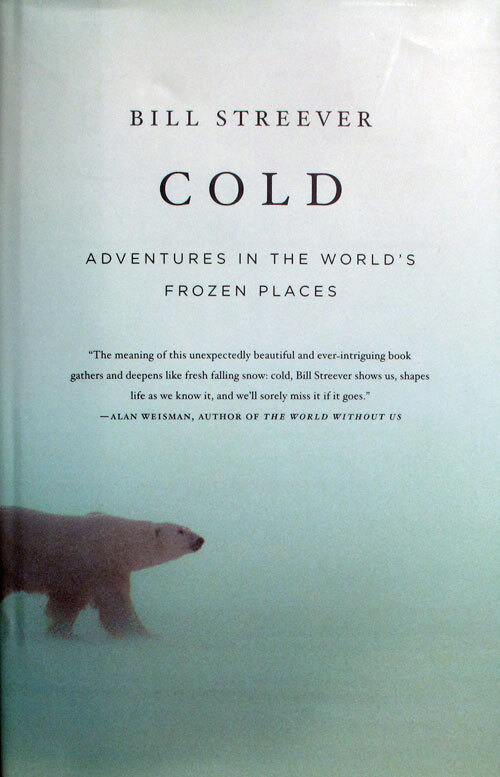
"Cold" sweeps the nation
When I met Bill Streever last year, as we chatted while standing on the thawed ground of an old permafrost research site, I was a bit jealous when he mentioned his notion to write an entire book on cold, and things related to it. What a simple, super idea, I thought.
Now, I’m really jealous. Right after its publication in July, Streever’s book, “Cold; Adventures in the World’s Frozen Places,” cracked the top 30 on The New York Times’ list of bestsellers for hardcover nonfiction. “Cold” has blanketed the nation, and Streever, a biologist and environmental studies leader for BP Exploration Alaska, has hit the big time.
And he richly deserves it. In “Cold,” Streever takes a subject we perhaps talk about more than any other in Alaska, and sends the reader from the tropics to the top of the world, and not as just a drop-in journalist. He has spent many days shivering in what passes for summer on the North Slope, and there are no descriptions of pine trees where only spruce stand, or other common mistakes that make Alaskans cringe. Streever knows of what he writes, as in his description of walking on snow at minus 20 degrees Fahrenheit. Most northerners have spoken the cliché of walking on plastic foam, but he makes it work by taking it one step farther.
“The snow screeches under our boots,” Streever writes, “as if we are walking on Styrofoam while wearing Styrofoam boots.”
Streever structured the book with each chapter representing a different month, and he begins each chapter with a description, often in first-person, that pulled me in every time.
“It is April second and well over sixty degrees in San Francisco,” he writes to start his tenth chapter. “Outside my hotel, Californians mill about, some walking on the streets or hanging from streetcars that pass beneath my room or hidden in cars and buildings. There are more people in this city than in all of Alaska. How such crowding is tolerated baffles me. And yet their roads are not frost-heaved, the windshields of their cars are not cracked from the combination of flying gravel and bitter cold, and their pipes are not frozen.”
His research must have been staggering, though probably fun, and he squeezed all the scientific jargon out of the thousands of words that passed through the filter of his brain.
“On a global scale, seen from a distance, it might be said that the polar regions suck in the heat of the tropics, swallowing the world’s warmth,” he writes. “The equatorial regions shed heat south and north, like a Weddell seal steaming as it lies on the Antarctic ice, or like a moose panting, overheated and uncomfortable, its hot breath projecting vaporous shadows against the snow.”
Of course, someone writing about cold needs to address climate change, and Streever does, writing of glaciers melting, permafrost thawing, and other northern evidence, yet he also ponders the carbon cost of his recent flight from Europe to Boston and his idling rental car that gets him around town.
“‘It’s my ice age,’ I say to myself, ‘and I’m killing it.’”
Streever includes a nice, simple observation on the thermal state of today’s globe, which is still a pretty cold place.
“We are in the midst of a warm spell, we are worried about global warming, but the fact remains that even in summer, whole regions remain covered with snow and ice. An area of land five times the size of Texas is in the permafrost zone, underlain by permanently frozen ground. If the mathematical predictions are right, we are at the tail end of an interglacial period, dramatically increasing its warmth with greenhouse gas emissions. But nevertheless we remain in what a geologist one hundred thousand years in the future would clearly recognize as part of the Pleistocene Ice Age.”
And, in an experience like going to the theater and seeing how Sean Penn portrayed Fairbanks in “Into the Wild,” it was again fun to see how an outsider, in this case the Anchorage-based Streever, portray the town in which I live:
“Fairbanks is a cold-affected town,” he writes. “The average temperature in January is minus ten. The temperature has been known to go close to a week without breaking minus forty. Thermometers in Fairbanks know what it is to dip south of fifty below. And the people sometimes look weathered, too, pale and hardened. They are thicker than most people, more insulated for winter. With minus forty just around the corner, this is no place for anorexia.”
We in Fairbanks, even if a bit chubby and pale, are experts on the cold, and Streever’s book passes muster with this northerner. He’s a fine, understated writer, and he’s pleasantly tricked me into learning more about our most abundant natural resource.





